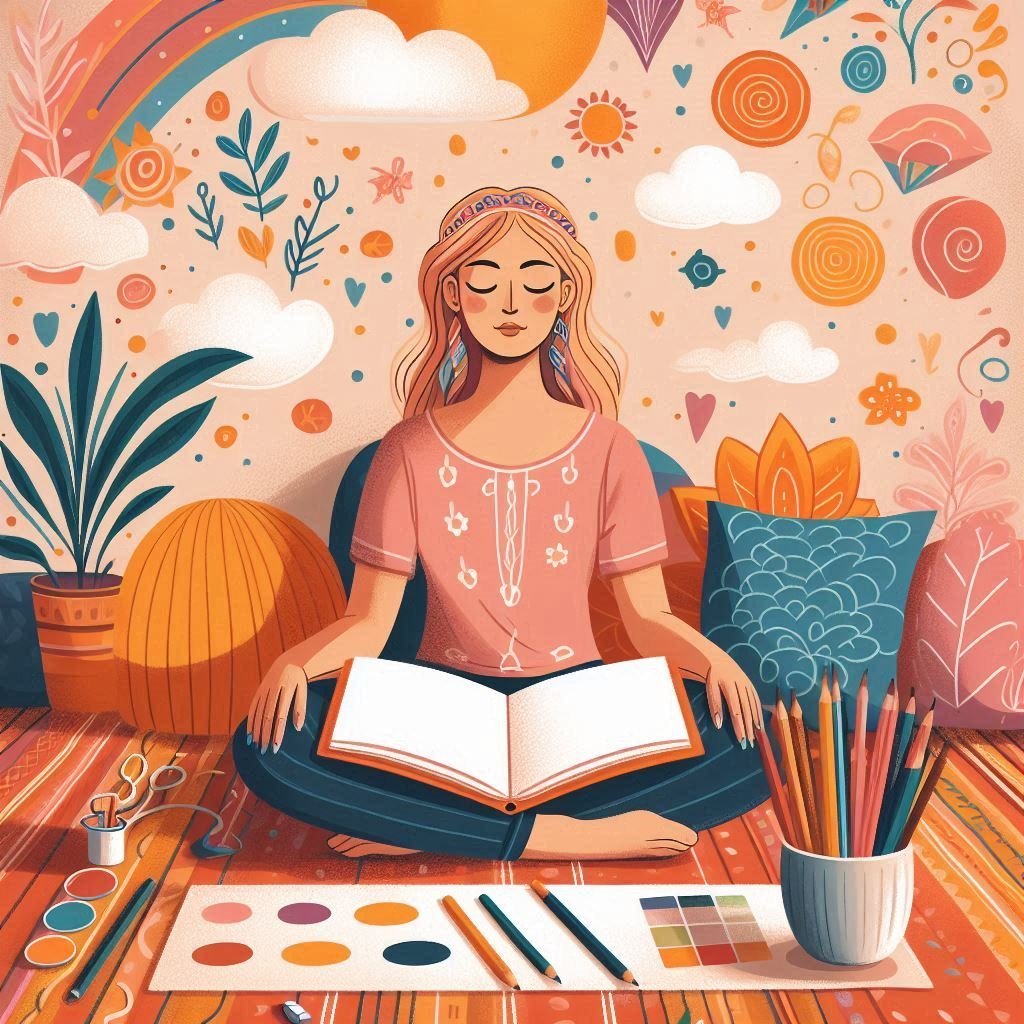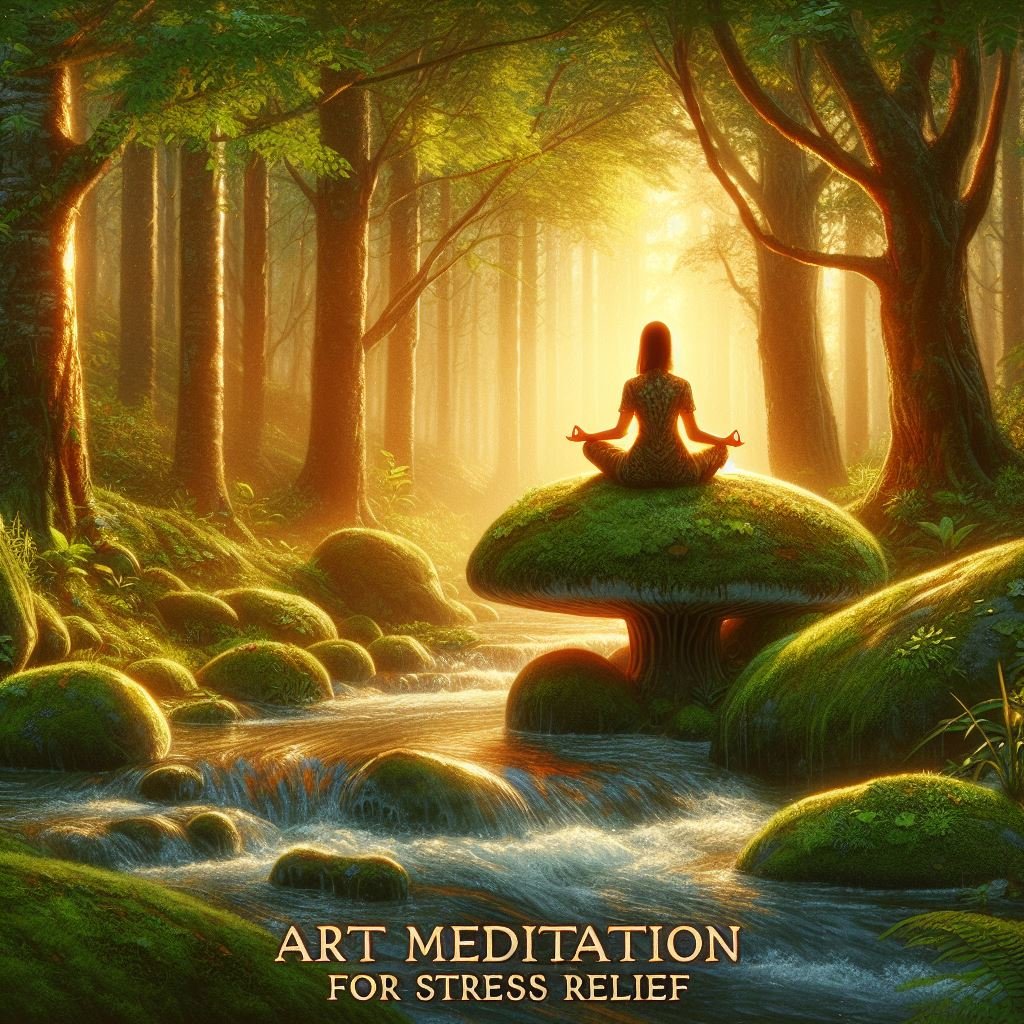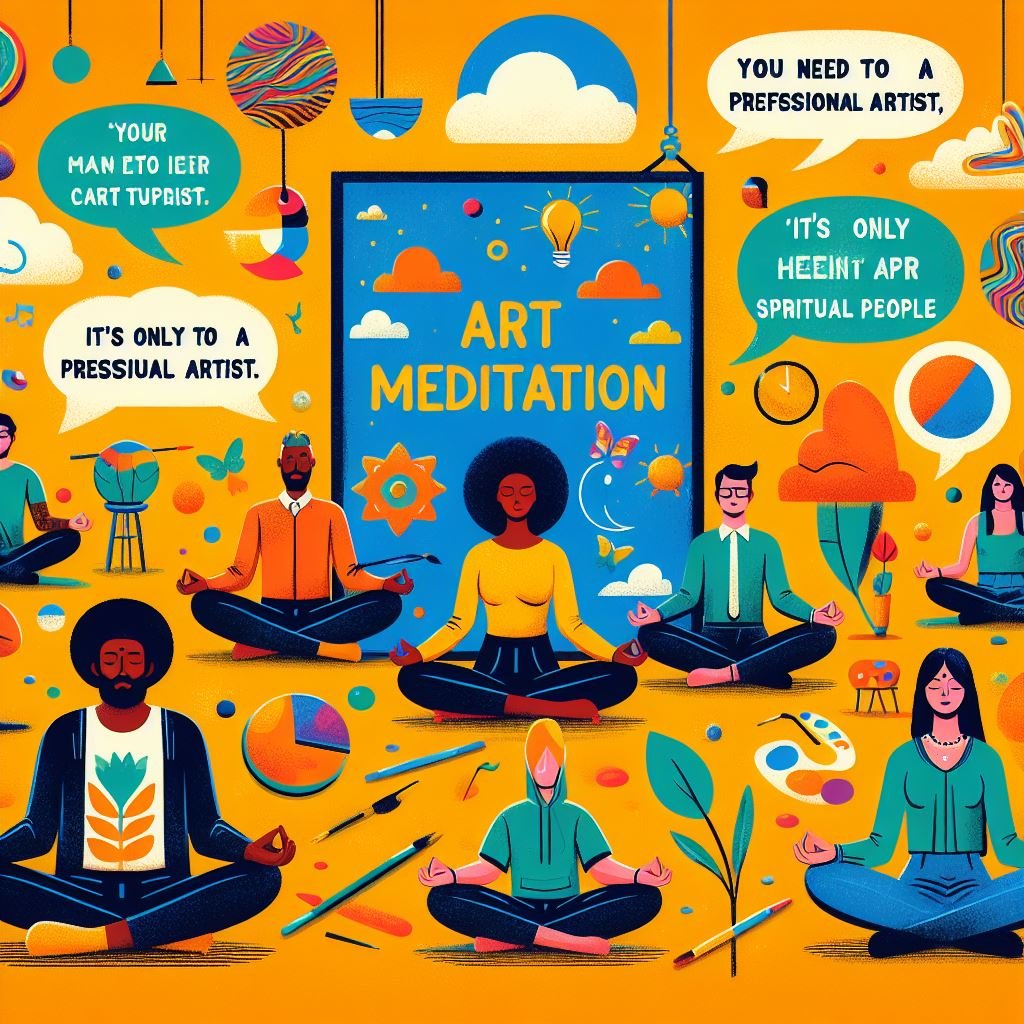Have you ever found yourself lost in a moment of creativity, where time seems to stand still and your mind is completely focused on the task at hand? That’s what art meditation feels like. It’s a unique blend of mindfulness and artistic expression that allows you to tap into your inner self while creating something beautiful.

Art meditation isn’t about creating a masterpiece or being a skilled artist. It’s about the process, the journey, and the experience. It’s about letting go of judgment, embracing imperfection, and allowing your creativity to flow freely. It’s about being present in the moment and finding joy in the act of creation.
When you engage in art meditation, you’re not just creating art – you’re also cultivating mindfulness. You’re training your mind to stay focused on the present moment, rather than getting caught up in thoughts about the past or worries about the future. This can have a profound impact on your overall well-being, reducing stress and anxiety, boosting mood, and improving mental clarity.
So, how does art meditation work? It starts with choosing an art form that resonates with you. This could be anything from painting and drawing to sculpting, collage-making, or even digital art. The key is to choose something that you enjoy and that allows you to express yourself freely.
Once you’ve chosen your art form, the next step is to create a calm and quiet space where you can practice your art meditation. This could be a dedicated art studio, a quiet corner of your home, or even outdoors in nature. The important thing is that it’s a space where you feel comfortable and free from distractions.
As you begin your art meditation, try to let go of any expectations or judgments. Don’t worry about the end result or whether your art is “good enough”. Instead, focus on the process. Pay attention to the feel of the paintbrush in your hand, the texture of the clay, or the colors on your canvas. Notice the thoughts and emotions that arise as you create, but try not to get caught up in them. Just observe them and let them pass, like clouds in the sky.
Art meditation is a journey, not a destination. It’s about exploring your inner world through the act of creation. It’s about finding peace in the present moment and expressing your unique perspective through your art. So why not give it a try? You might be surprised by what you discover.
The Connection Between Art and Meditation
Art and meditation may seem like two different worlds at first glance. One is all about creation and expression, while the other is about stillness and introspection. But if you look a little closer, you’ll see that they’re more connected than you might think.

Both art and meditation require a deep level of focus and presence. When you’re creating art, you’re fully engaged in the process, completely absorbed in the act of creation. You’re not thinking about the past or the future – you’re fully in the present moment, focused on the task at hand. This is very similar to the state of mindfulness that is cultivated through meditation.
In fact, creating art can be a form of meditation in itself. When you’re fully immersed in the creative process, your mind can enter a state of flow, where thoughts and worries fade away and you’re completely focused on the present moment. This state of flow is very similar to the state of mindfulness achieved through meditation.
Moreover, both art and meditation are tools for self-exploration and self-expression. Through art, you can express your thoughts, feelings, and experiences in a tangible form. Through meditation, you can explore your inner world and gain insights into your thoughts and emotions.
So, you see, art and meditation are not so different after all. They’re both paths to the same destination: a deeper understanding of ourselves and the world around us. By combining these two practices, we can enhance our creativity, cultivate mindfulness, and enrich our lives in countless ways.
Benefits of Art Meditation
Art meditation is more than just a fun and creative activity. It offers a wide range of benefits that can enhance your overall well-being. Let’s explore some of these benefits:

Physical Benefits
Engaging in art meditation can have several physical benefits. For one, it can help improve hand-eye coordination and fine motor skills, especially when the art form involves intricate work like drawing or sculpting. Additionally, the act of creating art can stimulate the release of dopamine, a neurotransmitter that promotes feelings of pleasure and satisfaction. This can lead to a better mood and a reduction in stress and anxiety levels.
Mental Benefits
Art meditation also offers numerous mental benefits. It can enhance creativity by encouraging free expression and innovative thinking. It can also improve concentration and focus, as creating art requires a high level of attention to detail. Furthermore, art meditation promotes a sense of calm and relaxation, helping to clear the mind and reduce mental clutter.
How to Start with Art Meditation
Starting with art meditation might seem daunting at first, but it’s actually quite simple. Here are some steps to help you get started:

Choosing Your Art Form
The first step in art meditation is choosing your art form. This could be anything that allows you to express yourself creatively – drawing, painting, sculpting, collage-making, or even digital art. The key is to choose something that you enjoy and that allows you to lose yourself in the process.
Creating a Meditation Space
The next step is to create a space where you can practice your art meditation. This doesn’t have to be a dedicated studio – it could be a quiet corner of your home, a spot in your garden, or even a local park. The important thing is that it’s a place where you feel comfortable and free from distractions.
Techniques of Art Meditation
Art meditation can be practiced in many different ways, depending on your chosen art form and personal preferences. Here are a few techniques that you might find helpful:

Mindful Drawing
Mindful drawing is a simple yet powerful technique that involves focusing on each stroke of the pencil or pen. As you draw, try to stay fully present in the moment, paying attention to the sensation of the pencil moving across the paper and the lines and shapes that you’re creating.
Sculpting
Sculpting is a more tactile form of art meditation that involves shaping and molding material with your hands. As you sculpt, focus on the sensation of the material in your hands and the process of transforming it into a three-dimensional form.
Painting
Painting can be a very freeing and expressive form of art meditation. As you paint, try to let go of any expectations or judgments and simply focus on the process of applying color to the canvas.
Art Meditation for Stress Relief
In today’s fast-paced world, stress has become a common part of our daily lives. But did you know that art meditation can be a powerful tool for stress relief?

When you’re engaged in creating art, your mind is focused on the task at hand, allowing you to momentarily forget about your worries and stresses. This can lead to a state of relaxation and calm, similar to the effect of traditional meditation.
Moreover, the act of creating art can be very therapeutic. It allows you to express your feelings and emotions in a non-verbal way, which can be particularly helpful if you’re dealing with stress or anxiety.
So, the next time you’re feeling stressed, why not give art meditation a try? Grab your art supplies, find a quiet space, and let your creativity flow. You might be surprised at how effective it can be in relieving stress and promoting a sense of calm and well-being.
Art Meditation for Self-Expression
Art meditation is not just a tool for relaxation and mindfulness, it’s also a powerful medium for self-expression. It provides a safe and non-judgmental space where you can explore your inner thoughts, feelings, and experiences, and express them through your art.

When you create art, you’re essentially telling a story – your story. You’re putting a piece of yourself into your work, whether it’s a drawing, a painting, a sculpture, or any other form of art. This can be incredibly liberating, especially if you’re someone who finds it difficult to express yourself verbally.
Moreover, art meditation allows you to express yourself in a way that’s unique to you. No two people will create the exact same piece of art, even if they’re given the same materials and instructions. That’s because art is a reflection of the individual – it’s influenced by our thoughts, our emotions, our experiences, and our perspectives.
So, if you’re looking for a way to express yourself, why not give art meditation a try? You might be surprised at what you’re able to create when you let go of judgment and allow your creativity to flow freely.
Art Meditation for Mindfulness
Mindfulness is the practice of being fully present and engaged in the current moment, and art meditation is a wonderful way to cultivate this state of mind.

When you’re creating art, you’re naturally drawn into the present moment. You become fully absorbed in the process, focusing on the colors, the textures, the shapes, and the movements of your hands. This focus on the present moment is the essence of mindfulness.
Moreover, art meditation encourages you to observe your thoughts and emotions without judgment. As you create, you may notice thoughts and feelings arising. Instead of getting caught up in them, you simply acknowledge them and let them pass, returning your focus to your art. This practice of observation without judgment is a key aspect of mindfulness.
In addition, art meditation can help you develop a greater awareness of your senses. As you create, you become more attuned to the sight of the colors, the feel of the materials, and even the sound of the brush on the canvas. This heightened sensory awareness can deepen your mindfulness practice and enhance your overall experience of the present moment.
Common Misconceptions About Art Meditation
Art meditation is a simple and accessible practice, but there are a few misconceptions that can sometimes prevent people from giving it a try. Let’s debunk some of these myths:

Myth 1: You Need to Be an Artist to Practice Art Meditation
This is perhaps the most common misconception about art meditation. The truth is, you don’t need to be an artist or have any prior experience with art to practice art meditation. It’s not about creating a masterpiece or impressing others with your skills. It’s about the process of creating and the experience of being present in the moment.
Myth 2: Art Meditation Is Difficult
Some people believe that art meditation is difficult or complicated. But in reality, it’s a very simple practice. All you need is some basic art supplies and a quiet space where you can focus on your art. The rest is up to you. You can draw, paint, sculpt, or create in any way that feels right to you.
Myth 3: Art Meditation Is Time-Consuming
Another common misconception is that art meditation requires a lot of time. While it’s true that you can spend hours immersed in your art if you choose to, it’s also possible to practice art meditation in just a few minutes a day. Even a short session can help you relax, focus, and connect with your creativity.
Conclusion
Art meditation is a powerful practice that combines the benefits of art and meditation. It allows you to express yourself creatively while also cultivating mindfulness and relaxation. Whether you’re an experienced artist or a complete beginner, art meditation can offer a unique and rewarding experience.
Remember, art meditation is not about creating perfect art. It’s about the process of creating and the experience of being fully present in the moment. So don’t worry about the end result. Just enjoy the process and see where your creativity takes you.
Art meditation can be a wonderful addition to your self-care routine. It can help reduce stress, boost your mood, and enhance your overall well-being. So why not give it a try? You might be surprised by what you discover.
Thank you for joining us on this journey through art meditation. We hope you found this article helpful and inspiring. Happy creating!